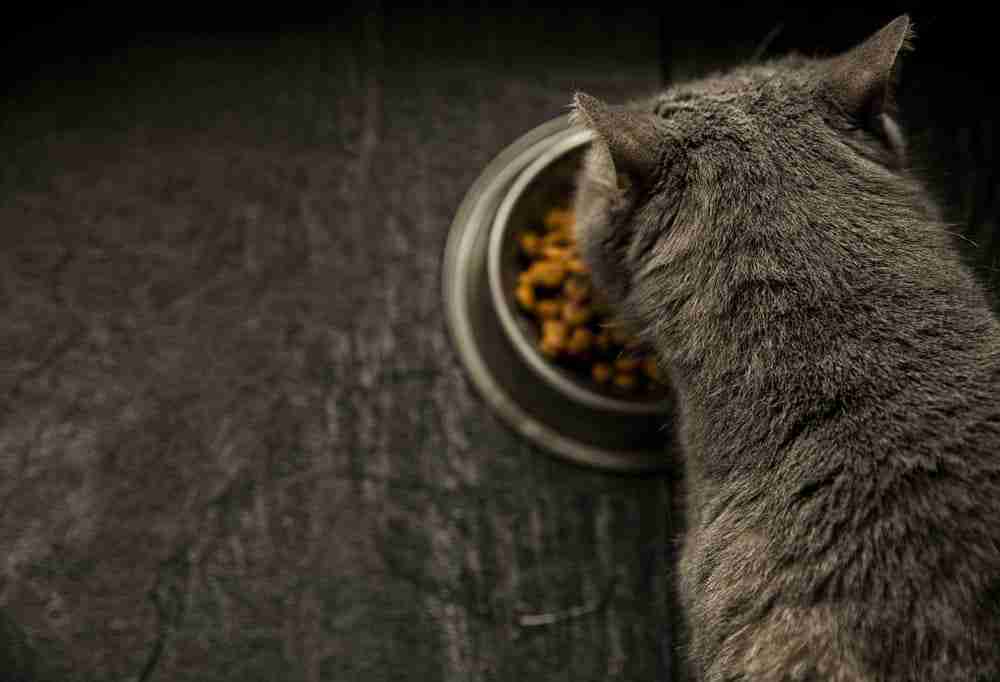Is your cat not eating much but acting normal? This can be a confusing situation and usually needs a little bit of detective work to get to the bottom of.
We are going to assume here that when you think they are normal, you don’t think there is a medical problem. This advice is for situations where your cat is free of diarrhea, vomiting, high temperatures, or otherwise obvious pain – in these instances get your cat to a vet.
In instances where your cat doesn’t eat anything for 36 hours – get them to a vet. You don’t want a serious condition to go undiagnosed and cats simply can’t go for long without eating at all, it can create liver problems.
When your cat just seems to have lost some of their appetite, doesn’t seem as interested in food as before or is just suddenly more picky than usual but is still eating something read on for some of the common reasons for this change in behavior and a few tips you can use to get them back to their old ways :
Why Is My Cat Not Eating As Much As Normal?
Eating Elsewhere?
Is your cat an outdoor cat? If so they could be getting fed elsewhere. Someone else might even think they are their cat! It is not unheard of for greedy cats to have access to a whole street of houses and be treated by each house as if it was their cat! If your cat goes missing for hours at a time they might be lodging elsewhere.
Alternatively, if your cat is outdoors often they could be raiding the trash or hunting and consuming prey which naturally reduces their appetite when at home. Farmers have a practice of cutting their barn cats’ rations from spring onwards to get them hunting – and then only give them a full ration over the winter period. Maybe your cat only needs half rations as instinct kicks in whilst outdoors?
Vaccinations
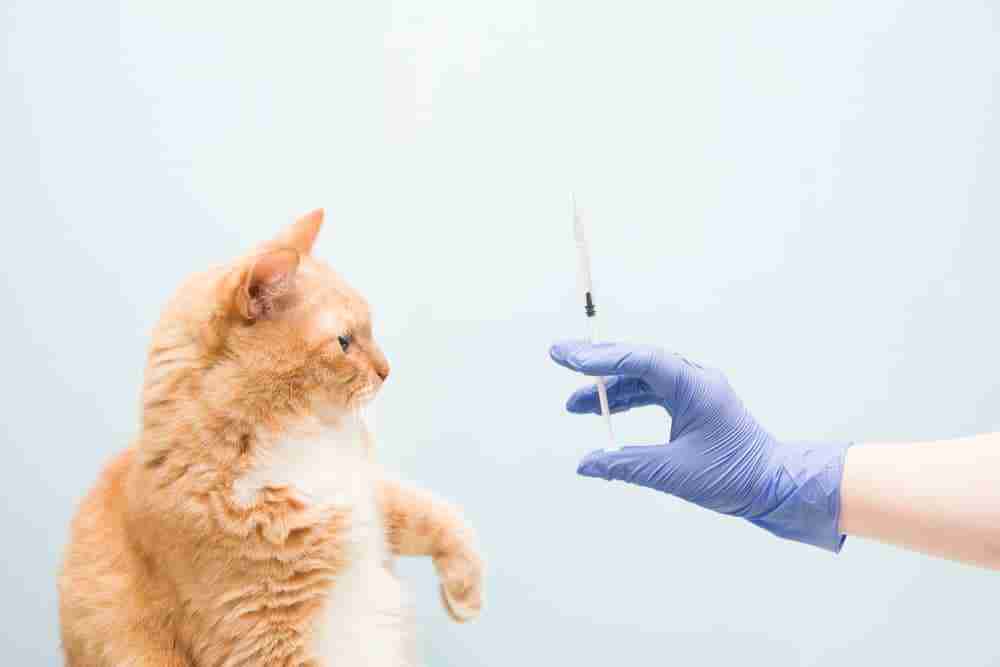
For some cats, they can lose their appetite after a vaccination. Obviously, it is not a long-term thing and passes in a few days, but if your cat is off its food or not as peckish as normal have you just got vaccinations done? This could be the answer to your mystery.
Hairballs
Indoor cats and long-haired cats are particularly likely to suffer from hairballs. With long-haired cats the reasons are obvious – sheer volume is the problem! With indoor cats, because they tend not to endure the seasons and have a constant temperature environment they tend to grow and shed fur continuously. If they lived outdoors and indoors their coats would still shed but on a more seasonal basis. All this loose fur along with standard cat grooming procedures ends up with hairballs.
If your cat is not eating much but is acting normal it could be because they are suffering from hairballs. Hair that accumulates in the stomach and doesn’t pass but instead forms a ball in readiness for ejection could actually be making your cat feel full already. They simply may not be getting hungry and as a result, don’t feel the need to eat!
Boredom
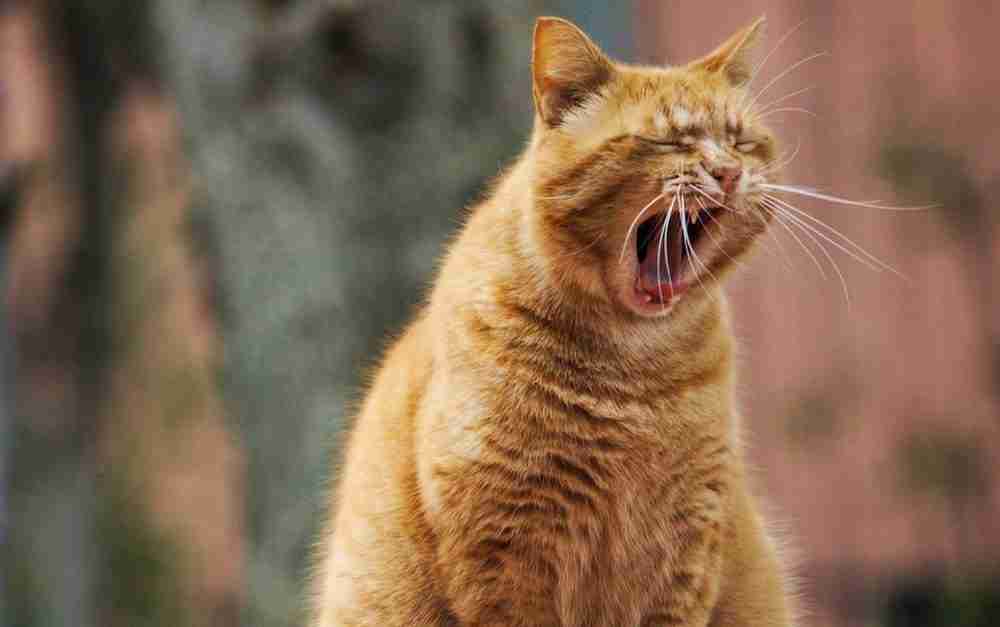
If you or I eat the same meal every meal, guess what? We are going to get bored of it! More to the point we are likely to lose our enthusiasm and appetite for the same old, same old. Our cats are no different.
Most owners experience their cats turning their noses up at a food offering and tend to stick with a food choice the cat initially finds palatable and gets on with. Problem is that if you don’t mix it up, at best, boredom can kick in. At worst your cat might develop sensitivities to the food that also results in a reduced appetite.
Travel
Some people are poor travelers and so are some cats! Motion sickness, change of environment or just travel weariness can put you or your cat off their food. If you have just taken your cat on a journey and are wondering why they are not eating as well as usual they might just need to kick back and let things settle down a bit before they are able to return to normal.
Age
Age can have a big impact on a cat’s appetite. Young cats that are growing have a tremendous appetite as they need feeding up to develop, but older cats find that their metabolism slows with age. If your cat isn’t the youngest anymore they might not be feeling as hungry as before as their metabolism slows down….
If your cat is the wrong side of nine years of age and has gradually lost its appetite, even if you have tried to remedy the situation, slowing metabolism and less hunger could be the culprit.
Dental Issues
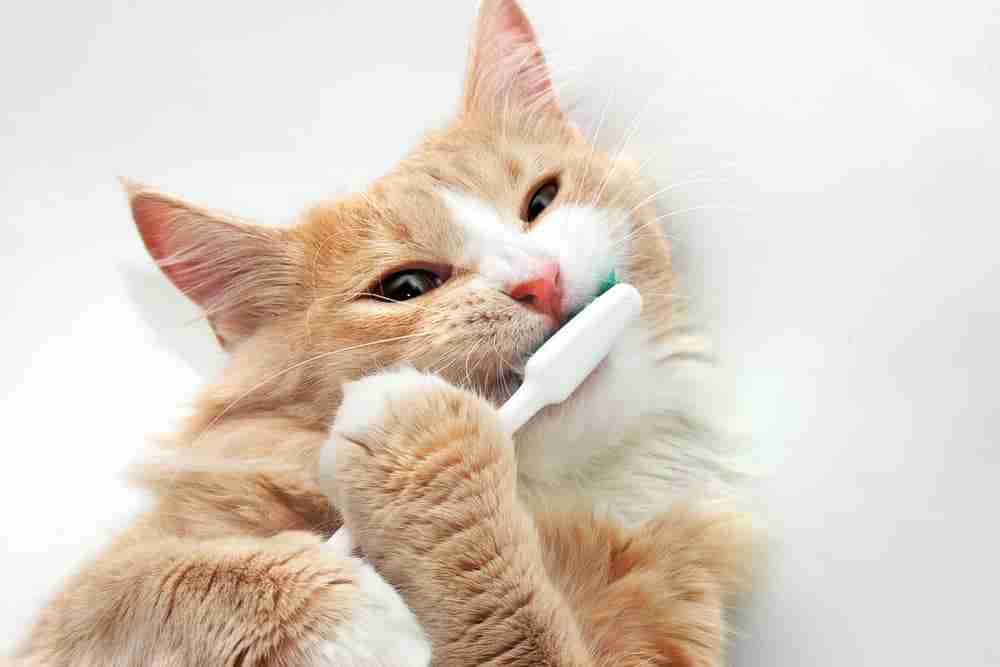
Ever tried eating with a sore tooth or with mouth ulcers? Not so good is it? Perhaps your cat has dental problems or just a sore mouth? This would be enough to slow them down from eating or to put them off completely – and it can happen literally overnight or gradually over a couple of weeks.
Cats are known to suffer from gingivitis, or bad gums, as a result of tartar build-up. Generally, if you take your cat for an annual check the vet will give their teeth a once over and look to scrape off tartar that can cause these problems. If you don’t take your cat for an annual once over it could be that dental problems have been allowed to settle in and are taking a toll on your cat and their appetite.
On the other hand, cats can chip and break teeth as easily as we can and a bust-up mouth might literally have happened overnight resulting in a reduction of appetite. Take a good look at your cat’s mouth and make sure everything is as it should be and that gums are healthy and pink. Keep an eye out for wobbly teeth and a fierce reaction to touch in the mouth area!
Stress
Your cats appetite might have dipped due to a bit of stress. Has something changed in your cat’s life that might be taking their mind off their appetite? Have you changed your routine? Changed shift pattern? Is your home busier than normal? Have you moved the furniture around and confused your cat? Have you moved home altogether? Is there a new pet in the house or wild/feral animals in your yard that might make your cat feel territorially threatened? Have you simply changed eating times and the type of food you put out?
Cats can suffer stress for a myriad of reasons, all of which may affect their eating habits.
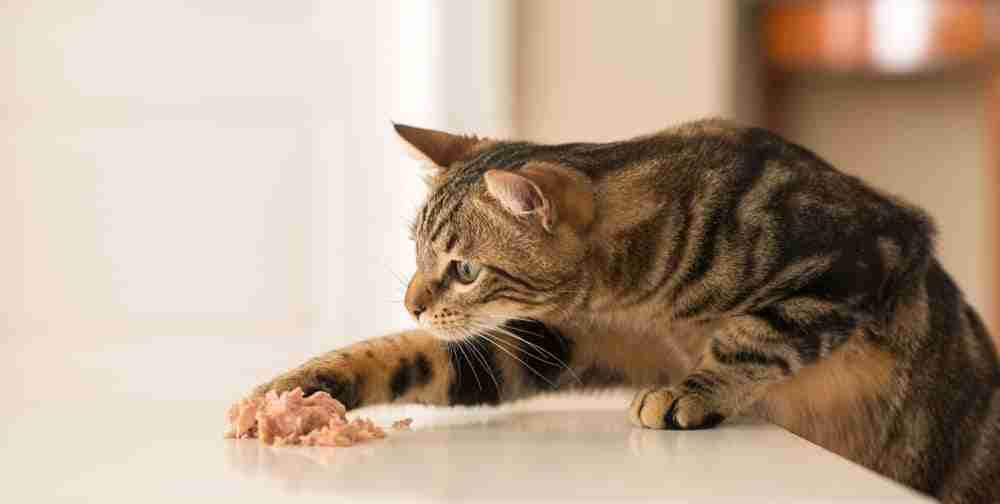
Tips To Get Your Cat To Eat More
So, if your cat has nothing medically wrong with themselves and just doesn’t have the appetite of previous (but is still eating something) what can you do to encourage them? Here are some tips that could get your cat eating well again.
Change The Food Out
Your cat could just be bored silly of what you are offering in terms of food. How about changing the food out and stimulating their curiosity?
If your cat eats a dry food diet try some wet food. The smell, flavor, and texture should be enough of a change to really stimulate their curiosity and if they like the flavor they are bound to tuck in!
If your cat already eats wet food try a different flavor or brand. Apart from being bored, something may have changed about the usual brand that is putting them off. If your cat licks wet food but doesn’t eat they may be put off by the texture.
If you feed your cat dry food and don’t want to go to wet food have you considered that the dry food might have lost flavor, changed odor or texture, and be putting your cat off? Bulk buys make sense when buying cat food, but dry food can spoil if left open too long. Try a fresh packet or a different brand and see if this helps your cat get eating again.
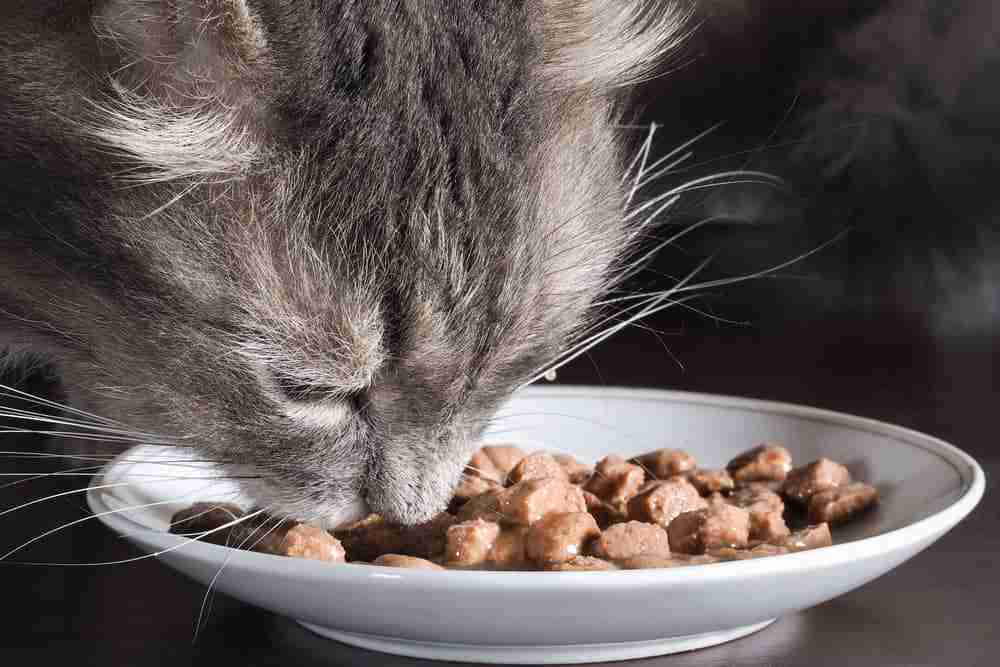
Change The Time Of The Food
There are two strands to this idea. First, if you free feed your cat, which means putting food out and letting them eat whenever suits them, stop free feeding and move to fixed meal times so they can build up a hunger between meals. Additionally, when the meal is over remove the food or remains so they understand this is when to eat, the choice may not exist after these new feeding times.
Second, if you feed at habitual times but don’t free feed, try varying the times to see if that stimulates a bit of extra appetite. Be careful not to stress your cat with too great a change of routine, but if you are half an hour later than usual with an evening meal this may be enough to get kitty to tuck in!
Heat It Up
If you are feeding your cat wet food it could be that the food is cold resulting in less flavor and a poorer texture. A bit like when you eat cold leftovers, they can be a bit greasy and unappetizing. Maybe your cat feels the same about cold food? This could be particularly true if you are storing an open tin of wet food in a refrigerator.
Remember, in the wild, your cat kills warm things and eats them still warm. Try bringing the food up to at least room temperature if you don’t already. This may seem more natural and palatable to your cat.
Feed By Hand
You might be able to tempt your cat to eat a little more if you feed them by hand. Some cats just aren’t interested in this type of feeding but some feel they get a little more attention when they are fed by hand and it might convince them to eat a little more just to get that attention from you.
You can get all sorts of treat foods and snacks that can make this easy if you don’t fancy getting wet cat food on your hand!
Play First Then Food
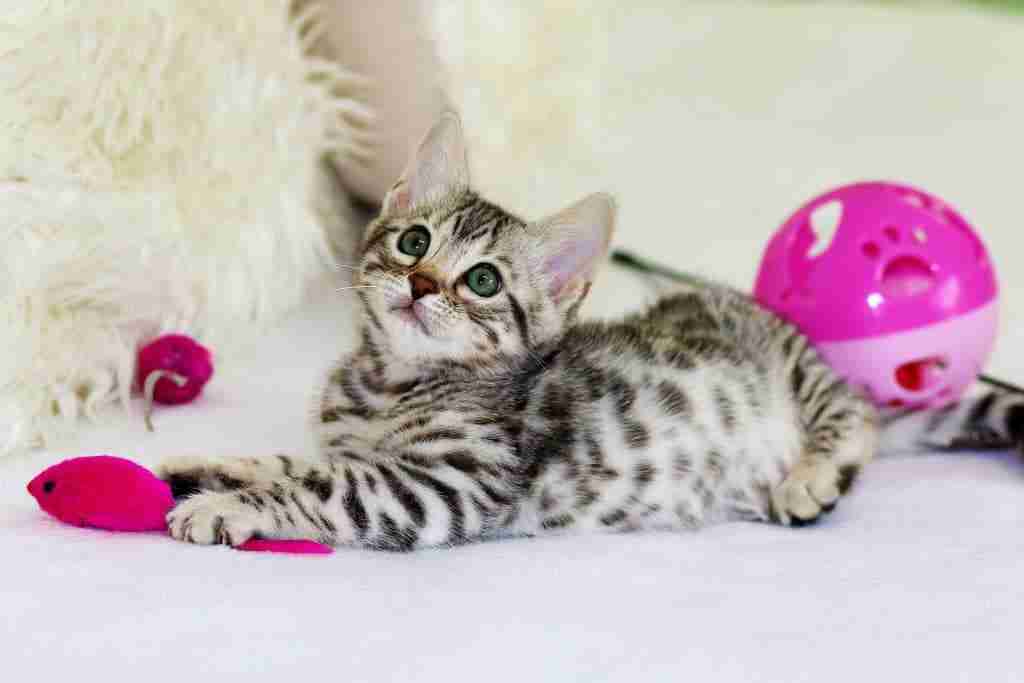
Tap into the natural order of a cat’s life. Cats naturally live life in this order: hunt, eat, groom, sleep. Is your cat’s daily lifestyle emulating the natural order? This could be where the problem lies.
To get your cat eating, have a play session before meal times that naturally stimulates those hunting instincts. The idea is that after a good hunting session your cat will eat as if they had successfully hunted, then groom and then sleep things off. Fifteen minutes of flat-out chase and play may be enough to boost that appetite back up to normal.
Change The Food Bowl Location
The food bowl can be a source of many feeding problems when it comes to your cat. The bowl could be too deep and create whisker stress, could be placed near drinking water making your cat go off either water or food (cats don’t eat near water in the wild for fear of contaminating water supplies), or could be in a busy zone of the home where your cat can’t settle for fear of disturbance or ambush.
Consider changing the location of the bowl and the depth of the bowl. This might be enough to settle your cat to eat more. If you move the bowl to a quiet area with clear views your cat might feel more comfortable and grab a longer meal rather than just a few rushed mouthfuls.
Treat for Hairballs
If your cat is an indoor cat or a fluffy cat they might be suffering from hairballs. These could be making them feel fuller and reduce their appetite. A hairball treatment might be enough to dislodge the hairballs and get them back on track. Some foods are formulated for hairballs. They often contain extra fiber to get the digestive system moving or they have added lubricants (oils) to get the system greased up.
Try a treatment or alter their diet to a hairball control food to see if that leads to an increase in appetite.
